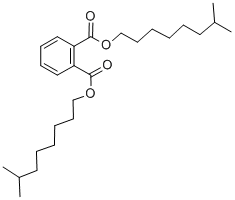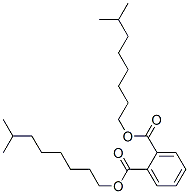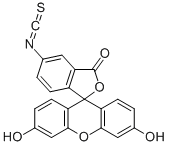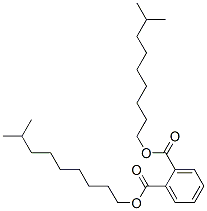2-Methylphenyl isothiocyanate
Synonym(s):2-Methylphenyl isothiocyanate;3-Tolyl isothiocyanate, Isothiocyanic acid 2-methylphenyl ester
- CAS NO.:614-69-7
- Empirical Formula: C8H7NS
- Molecular Weight: 149.21
- MDL number: MFCD00004802
- EINECS: 210-390-6
- SAFETY DATA SHEET (SDS)
- Update Date: 2025-01-27 09:38:02

What is 2-Methylphenyl isothiocyanate?
Description
2-Methylphenyl isothiocyanate is a biochemical product that can be used in proteomics research. The New Zealand Environmental Protection Agency (EPA) states that 2-Methylphenyl isothiocyanate does not have a separate approval but can be used under the appropriate group criteria. It can also be used in gas phase reaction studies with hydroxyl radicals.
Chemical properties
CLEAR YELLOW LIQUID
The Uses of 2-Methylphenyl isothiocyanate
Ethyl Carbitol Acetate has a wide varaity of applications as it is used in surfactants, films and resins.
What are the applications of Application
o-Tolyl isothiocyanate is a useful biochemical for proteomics research
Properties of 2-Methylphenyl isothiocyanate
| Melting point: | 236 °C |
| Boiling point: | 239 °C |
| Density | 1.115 g/mL at 25 °C(lit.) |
| refractive index | 1.6351-1.6371 |
| Flash point: | 107 °C |
| storage temp. | Store below +30°C. |
| solubility | Chloroform (Slightly), Methanol (Slightly) |
| form | Liquid |
| color | Clear yellow |
| Specific Gravity | 1.1551.115 |
| Water Solubility | MAY DECOMPOSE |
| Sensitive | Moisture Sensitive |
| BRN | 878487 |
| CAS DataBase Reference | 614-69-7(CAS DataBase Reference) |
| NIST Chemistry Reference | Benzene, 1-isothiocyanato-2-methyl-(614-69-7) |
Safety information for 2-Methylphenyl isothiocyanate
| Signal word | Warning |
| Pictogram(s) |
 Exclamation Mark Irritant GHS07 |
| GHS Hazard Statements |
H315:Skin corrosion/irritation H319:Serious eye damage/eye irritation H335:Specific target organ toxicity, single exposure;Respiratory tract irritation |
| Precautionary Statement Codes |
P261:Avoid breathing dust/fume/gas/mist/vapours/spray. P280:Wear protective gloves/protective clothing/eye protection/face protection. P301+P312:IF SWALLOWED: call a POISON CENTER or doctor/physician IF you feel unwell. P305+P351+P338:IF IN EYES: Rinse cautiously with water for several minutes. Remove contact lenses, if present and easy to do. Continuerinsing. |
Computed Descriptors for 2-Methylphenyl isothiocyanate
| InChIKey | JYKYYPPZLPVIBY-UHFFFAOYSA-N |
New Products
3-Iodophenylacetic acid 3-Pyridineacetonitrile, α-hydroxy- 2-Propanamine, 1-chloro-, hydrochloride (9CI) 3-(hexyloxy)-4-(pyridin-3-yl)-1,2,5-thiadiazole 2-Hexyn-1-ol Dibenzo-18-crown-6 Nickel(II) perchlorate hexahydrate, 98% 4-Bromophenylacetonitrile, 95% 3-Bromo-4-fluoroaniline, 97% Sodium tetraborate decahydrate, 98% Palladium(II) acetate, trimer, Pd 99% 4-Bromo-2-chlorotoluene, 97% N N Dimethylformamide Dimethyl Acetal (Dmf Dma) 2,3-Dichloro Benzoyl Cyanide [Side Chain] Bis(2-Chloroethyl) Amine Hydrochloride L-Glutamic Acid Diethyl Ester Hydrochloride 5-(Difluoromethoxy)-2-Mercaptobenzimidazole 1-Ethyl-3-(3-Dimethylaminopropyl)-Carbodiimide Hydrochloride [EDC Hcl] 1,4-Napthoquinone Bromoiodomethane Sodium Bicarbonate Methylene Dichloride (MDC) Ethyl Acetate Indole-3-Carbinol (I3C)Related products of tetrahydrofuran








You may like
-
 o-Tolyl Isothiocyanate CAS 614-69-7View Details
o-Tolyl Isothiocyanate CAS 614-69-7View Details
614-69-7 -
 2-Methylphenyl isothiocyanate CAS 614-69-7View Details
2-Methylphenyl isothiocyanate CAS 614-69-7View Details
614-69-7 -
 17604-74-9 3-Pyridineacetonitrile, α-hydroxy- 98+View Details
17604-74-9 3-Pyridineacetonitrile, α-hydroxy- 98+View Details
17604-74-9 -
 131987-69-4 98+View Details
131987-69-4 98+View Details
131987-69-4 -
 Cyclohexane, (2-propynyloxy)- 67967-07-1 98+View Details
Cyclohexane, (2-propynyloxy)- 67967-07-1 98+View Details
67967-07-1 -
 2-Propanamine, 1-chloro-, hydrochloride (9CI) 98+View Details
2-Propanamine, 1-chloro-, hydrochloride (9CI) 98+View Details
5968-21-8 -
 3-Iodophenylacetic acid 1878-69-9 98+View Details
3-Iodophenylacetic acid 1878-69-9 98+View Details
1878-69-9 -
 132945-75-6 (S)-1-Boc-3-methanesulfonyloxy-pyrrolidine 98+View Details
132945-75-6 (S)-1-Boc-3-methanesulfonyloxy-pyrrolidine 98+View Details
132945-75-6
Statement: All products displayed on this website are only used for non medical purposes such as industrial applications or scientific research, and cannot be used for clinical diagnosis or treatment of humans or animals. They are not medicinal or edible.
